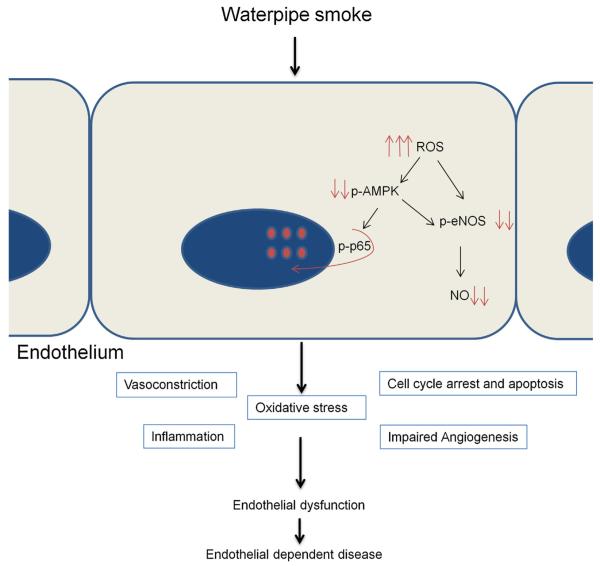Fig. 5.
Proposed model of WPS as a contributing factor for endothelial cell dysfunction and as a risk factor for endothelial-dependent disease. After exposure to WSC, endothelial cells increase their ROS production, which in turn induces cell cycle arrest, cellular apoptosis and inflammation. These processes are responsible for the disturbance of the endothelial integrity and interfere with the balance of injury and repair mechanisms. WSC down-regulates eNOS expression, impairs AMPK-mediated eNOS phosphorylation, and impairs AMPK-suppressed inflammation. Thus, WPS is implicated in the endothelial dysfunction represented by impaired endothelium-dependent vasodilation and altered anti-inflammatory properties of the endothelium. Moreover, WSC interferes with the repair mechanism of HAEC cells through inhibited angiogenesis. WPS initiates a cascade of signals that lead to the disruption of the structural and functional integrity of the endothelium facilitating the progression of endothelial-dependent disease.

